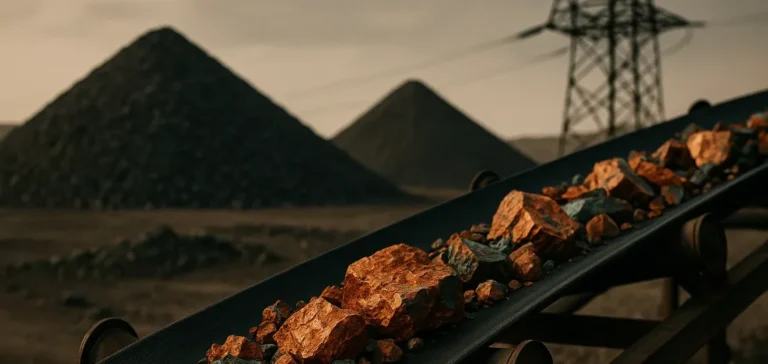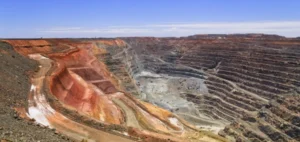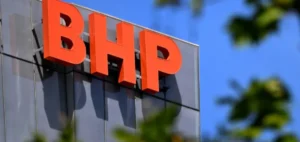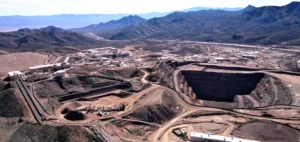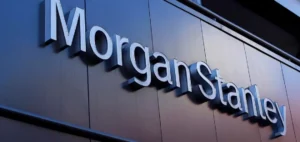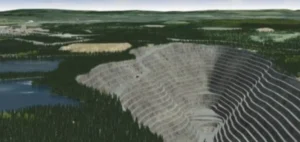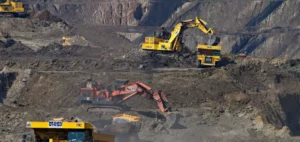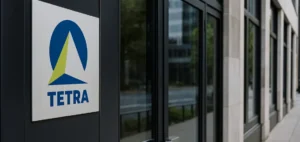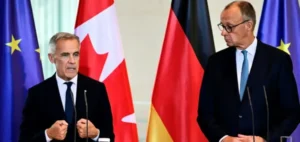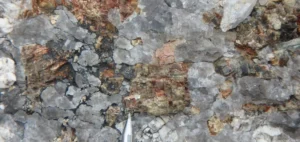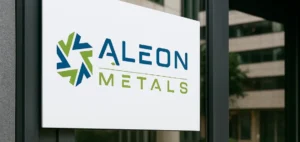Oman’s Ministry of Energy and Minerals has signed three mining exploration and exploitation agreements valued at $500 million, marking an acceleration in the sultanate’s economic diversification strategy. The concessions, awarded to Gulf Mining Materials Company and Novel Muscat International Company, cover 1,677 square kilometers in the Al Buraimi and Al Wusta governorates. These projects target the extraction of copper, chrome, silica, limestone and industrial salts, essential materials for manufacturing industries and the global energy transition. The announcement comes as Oman’s mining sector currently represents only 0.6% of national gross domestic product, far from the $779 million contribution target set for 2030.
Gulf Mining Materials Company will invest $4 million in the initial exploration phase of zone 11C, located in Al Buraimi Governorate. This 1,089-square-kilometer concession hosts ophiolitic rock formations rich in copper and chrome, two metals whose global prices experienced significant volatility in 2024. Copper currently trades around $9,300 per metric ton on Asian markets, while treatment and refining charges remain negative at minus $41.70 per metric ton according to S&P Global Platts assessments. This tight market dynamic reflects a growing imbalance between global mining supply, expected to peak at 27.3 million tons in 2030, and demand driven by transport electrification and data infrastructure.
Massive Investments in Industrial Transformation
Novel Muscat International will deploy the bulk of the $500 million across two distinct zones in Al Wusta Governorate. The first 558-square-kilometer concession will host a hydrated lime production plant, while the second 30-square-kilometer zone will house a sodium carbonate production facility using seawater evaporation. These industrial infrastructures add to existing Minerals Development Oman (MDO) projects, notably the Sohar titanium complex with 150,000 tons annual capacity and the Mazoon copper project targeting 115,000 tons of annual production by 2027. Oman’s mining sector produced 67.7 million tons of minerals in 2024, generating revenues of $297 million, mainly from gypsum exports which represent 35% of total volume.
The three new concessions fall within the framework of Vision 2040, the economic transformation plan aiming to increase non-oil activities’ contribution to 90% of gross domestic product. The program also plans to create 1,660 direct jobs for Omani citizens in the mining sector, in line with Omanization objectives targeting a 42% rate of nationals in the private sector by 2040. Selected companies will need to conduct geophysical and geochemical studies and exploratory drilling during the first three years, before moving to the commercial production phase.
Strategic Positioning in Global Markets
Oman possesses significant geological advantages with confirmed reserves of 30 million tons of chromite, 111 million tons of high-purity silica and 242 million tons of dolomite according to MDO’s latest assessments. The country already exports 90% of its chrome production to China and holds first place globally for gypsum exports with 12.4 million tons shipped annually. The sultanate’s logistics infrastructure, notably the port of Duqm and railway projects under development, facilitates access to Asian markets where demand for base metals remains sustained despite China’s economic slowdown. BMO Capital Markets analysts forecast a refined copper surplus of 100,000 tons in 2025, but constraints on concentrate supply maintain price pressure.
The Ministry of Energy and Minerals is preparing a new series of tenders for 15 to 20 additional mining blocks, particularly targeting nickel, cobalt and rare earth deposits. These strategic metals are essential for electric vehicle batteries and renewable technologies, sectors where demand is expected to grow by 70% by 2050 according to the International Energy Agency. Foreign direct investments in Oman’s mining sector remain limited to partnerships with local companies, in accordance with ownership restrictions that maintain national control over natural resources. This approach contrasts with more liberal strategies adopted by Saudi Arabia and the United Arab Emirates, which actively court international mining majors to develop their own mineral resources estimated at $2.5 trillion and $700 billion respectively.


